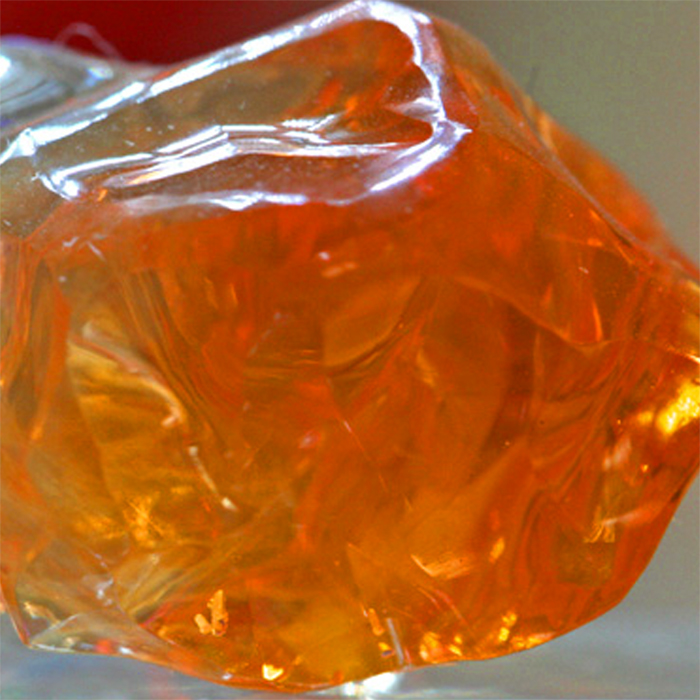Scientific Name: Hardened silica gel
Group: Silicates – tectosilicates
Chemical composition: SiO2nH20
Colors: Orange/red to yellow.
Hardness: 5 to 6
Formation: Amorphous crystal; Massive form
Principal Sources: Mexico
Special Notes: Opal is an amorphous form of silica related to quartz, a mineraloid form, not a mineral. 3% to 21% of the total weight is water, but the content is usually between 6% to 10%. It is deposited at a relatively low temperature and may occur in the fissures of almost any kind of rock, being most commonly found with limonite, sandstone, rhyolite, marl and basalt. It varies in optical density from opaque to semi-transparent. At micro scales precious opal is composed of silica spheres some 150 to 300 nm in diameter in a hexagonal or cubic close-packed lattice. These ordered silica spheres produce the internal colors by causing the interference and diffraction of light passing through the microstructure of the opal. Girasols, more commonly called fire opals, are transparent to translucent opals with warm body colors of yellow, orange, orange-yellow or red. They do not usually show any play of color, although occasionally a stone will exhibit bright green flashes. The most famous source of fire opals is the state of Querétaro in Mexico.

